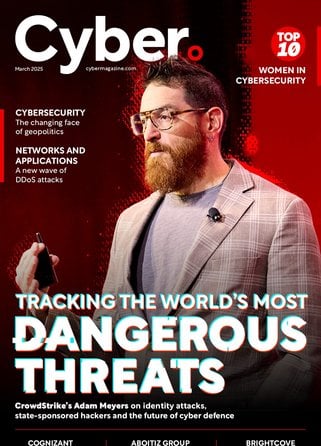What if the very systems designed to protect your identity are the ones putting you at risk? In an ever-evolving digital landscape fraught with threats, understanding the security confidence gap is more crucial than ever. Recent findings from Cisco provide valuable insights into this pressing issue.

This image is property of i.ytimg.com.
Understanding the Identity Security Confidence Gap
In today’s digital ecosystem, identity security remains a critical pillar for organizations of all sizes. Despite widespread acknowledgment of its importance, many firms are grappling with confidence issues regarding their identity security measures. The Cisco 2025 State of Identity Security report surveyed IT and security leaders across North America and Europe, revealing a notable disconnect: while awareness of identity security’s importance is high, the execution often falls short.
The Disparity in Trust
Only 33% of IT leaders feel confident in their current identity provider’s ability to ward off identity-based attacks. This statistic highlights a significant gap in trust and awareness within organizations. Even with the acknowledgment that identity security is vital, many executives are left questioning the effectiveness of their systems. You might wonder what contributes to this lack of confidence.
Complexity Complicates Confidence
As technology evolves, so does the complexity of identity infrastructures. Matt Caulfield, Cisco’s VP of Identity & Duo, elaborates that complexity often decreases overall security. In fact, 94% of leaders agree that the intricate nature of their identity infrastructure creates vulnerabilities. When security measures become overly complicated, it becomes increasingly difficult to maintain clarity on potential threats.
Financial Implications of Identity Breaches
The impact of these identity security concerns is tangible. Over half of surveyed organizations have experienced financial losses due to incidents related to identity breaches. This fact underscores the need for a focused investment in identity security. In a proactive response, 82% of financial decision-makers are planning to increase their organization’s identity security budgets for 2025.
The Role of AI in Identity Security
Artificial Intelligence (AI) presents both new challenges and opportunities concerning identity protection. In its research, Cisco highlights how AI-driven phishing threats are perceived as critical concerns by security leaders.
AI-Driven Phishing: A Serious Threat
AI technology has enhanced the sophistication of phishing attacks, making them more challenging to combat. Leaders noted that 44% consider AI-powered phishing to be among the top threats in identity security for 2025. While traditional security measures falter against such advanced techniques, the same technology can also serve as a tool for enhancing security measures.
Leveraging AI for Security Improvements
In light of AI’s evolving role in security, many organizations are turning toward AI to modernize their identity protection strategies. Cisco’s research found that 85% of companies are adopting security-first identity practices specifically to counteract AI-driven threats. By channeling the advantages of AI, organizations can craft robust defenses while mitigating risks.
Accelerated Timelines for Security Improvements
The increased threat landscape has compelled organizations that were previously hesitant to postpone identity modernization projects to accelerate their plans. Implementing comprehensive solutions capable of detecting and responding to automated attack patterns has become imperative.

This image is property of i.ytimg.com.
The Importance of Multi-Factor Authentication
Despite recognizing the significance of multi-factor authentication (MFA) as a defense against phishing, many organizations have not fully realized its potential.
The Lag in MFA Deployment
An astonishing 87% of leaders deem phishing-resistant MFA critical to their security strategies; however, only 30% express high confidence in their current phishing controls. Cisco’s findings further reveal that weak or missing MFA accounts for 36% of identity breaches. Such statistics emphasize the need for strengthened MFA implementation across organizations.
Common Gaps in MFA Implementation
- Weak or Missing MFA: This is a direct vulnerability and often contributes to potential breaches.
- Coverage Gaps: Lack of comprehensive MFA coverage in the organization exposes it to risks.
- One-time Passcode Failures: These failures can be a significant hindrance to securing identities and accessing systems.
With alarming statistics indicating that certain challenges with MFA can lead to identity breaches, it’s vital for organizations to reassess their strategies.
The Shift Towards Proactive Identity Security Management
Organizations are starting to recognize the necessity of transitioning from a reactive to a proactive stance regarding identity security.
Moving Beyond Reactionary Measures
Historically, identity security has often been treated as an afterthought, implemented only following compliance issues or security breaches. This reactive model can create additional complexity and cost, leading to misalignment across teams.
Increased Interest in Vendor Consolidation
To enhance identity security oversight and combat tool sprawl, 79% of teams are considering vendor consolidation. By streamlining processes and tools, organizations can achieve better visibility and efficiency.
Integration of Identity and Device Data
Integration challenges persist, with only 52% of organizations reporting full integration of identity and device data streams. Access to real-time data can empower security teams to make informed decisions on access controls and threat responses. You can imagine how beneficial it would be to have holistic visibility when devising security strategies.

This image is property of assets.bizclikmedia.net.
Third-Party Access Control: A Growing Concern
As workforces adapted to remote work, third-party access control vulnerabilities have become increasingly evident.
The Dangers of Extended Perimeters
With 86% of leaders expressing concerns regarding inadequate control over external contractors and third parties, the extended perimeter poses unique challenges. You might see how unmanaged devices and delayed deprovisioning processes can complicate security measures.
Importance of Identity Threat Detection and Response
Identity threat detection and response capabilities have ascended to a new level of importance. A whopping 87% of leaders consider ITDR essential for enhancing their security posture. However, despite this acknowledgment, only 32% of IT teams have successfully deployed Identity Security Posture Management tools.
The Strategic Imperative of Access Management
Managing who accesses what, from where, and on which device is more than just an operational task; it’s a strategic imperative. Organizations are realizing that addressing these questions proactively can significantly bolster their security frameworks.
Bridging the Confidence Gap
With so much at stake, bridging the security confidence gap in identity protection requires informed strategies and decisive actions.
Investing in Comprehensive Solutions
Organizations should prioritize investing in comprehensive identity security solutions. Doing so not only cushion them against potential breaches but also elevate their overall security posture.
Encouraging Collaborative Security Culture
Creating a culture where security is everyone’s responsibility is essential. By engaging employees in identity security strategies, you establish a collective commitment to safeguarding organizational identity.
Continuous Evaluation and Adaptation
Cyber threats are constantly evolving; thus, organizations should continuously evaluate and adapt their security measures. This involves not just updates to technology but also revising policies, training, and procedures that recognize the looming threats.

This image is property of assets.bizclikmedia.net.
Conclusion: The Path Forward
Recognizing and addressing the security confidence gap is vital to building robust identity security frameworks. As you strive to enhance your organization’s defenses, remember that effective identity security is a collective effort requiring ongoing evaluation, investment, and employee engagement.
By fostering a comprehensive strategy that includes AI, preventative measures like multi-factor authentication, and a proactive approach to identity management, you can position your organization to face the evolving threats of the digital era with confidence. The path forward may be challenging, but it is paved with immense opportunity for those prepared to meet it head-on.